
The Mountain Time Zone of North America keeps time by subtracting seven hours from Coordinated Universal Time (UTC) when standard time (UTC−07:00) is in effect, and by subtracting six hours during daylight saving time (UTC−06:00). The clock time in this zone is based on the mean solar time at the 105th meridian west of the Greenwich Observatory. In the United States, the exact specification for the location of time zones and the dividing lines between zones is set forth in the Code of Federal Regulations at 49 CFR 71.
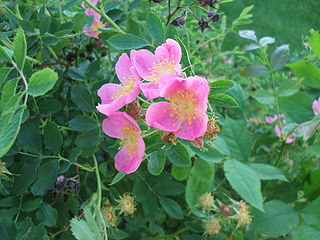
Rosa arkansana, the prairie rose or wild prairie rose, is a species of rose native to a large area of central North America, between the Appalachian and Rocky Mountains from Alberta, Manitoba, and Saskatchewan south to New Mexico, Texas and Indiana. There are two varieties:

Papilio multicaudata, the two-tailed swallowtail, is a species of the family Papilionidae found in western North America from British Columbia to Central America.

Oeneis is a butterfly genus of the Satyrinae. All but one of its members are Arctic, sub-Arctic or high-altitude alpine in distribution. Some of the members of the genus are among the butterflies that can get along in the harshest climates of any butterflies. Four species in Europe, more are found in Arctic Russia, Siberia, Mongolia, Arctic North America and the Rocky Mountains. Curiously, there are no observations from Greenland. The development of most species takes two years.

Oeneis chryxus, the chryxus Arctic or brown Arctic, is a butterfly of subfamily Satyrinae found in the far northwest regions of Canada and the United States. The brown Arctic has highly variable colorings, which tend toward light yellow to orange brown wings that help camouflage it against its mountainous rocky habitat. The larvae feed on local grasses and take two years to develop. This longer development period results in flights of adult brown Arctics only once every two years. The butterflies feed on nectar from various plants as their primary food source.

Oeneis jutta, the Jutta Arctic or Baltic grayling, is a species of butterfly in the subfamily Satyrinae with a Circumboreal distribution. It occurs in bogs and tundra in the north of Europe, the Baltic states, the Urals, Siberia, northern Kazakhstan, the Russian Far East, northern Mongolia, northeastern China, North Korea, and northern North America. Larvae feed on Carex and Eriophorum, possibly also Glyceria, Molinia, and Juncus. Ledum palustre is the preferred nectar plant of the adult butterflies. The species has one generation every one or two years, depending on the location.

Crepis runcinata is a North American species of flowering plant in the family Asteraceae known by the common name fiddleleaf hawksbeard. It is native to western and central Canada, the western and central United States and northern Mexico (Chihuahua).

Autographa californica, the alfalfa looper, is a moth of the family Noctuidae. The species was first described by Adolph Speyer in 1875. It is found in western North America from southern British Columbia to Baja California and to Manitoba, South Dakota, Colorado and New Mexico.
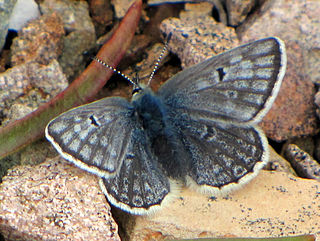
Agriades glandon, the Arctic blue or Glandon blue, is a species of butterfly in the family Lycaenidae. It in found in Eurasia and North America.
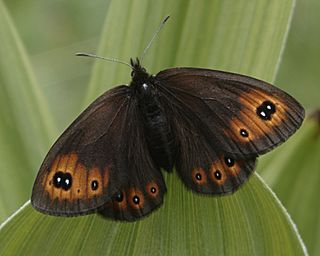
Erebia epipsodea, the common alpine, is a butterfly species of the subfamily Satyrinae of family Nymphalidae. It is found in North America from Alaska south through the Rocky Mountains to northern New Mexico and east across the prairie provinces to southwest Manitoba.
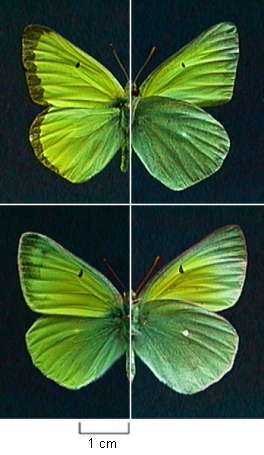
Colias alexandra, the Queen Alexandra's sulphur, Alexandra sulphur, or ultraviolet sulfur, is a butterfly in the family Pieridae found in western North America. Its range includes Alaska to the Northwest Territories and south to Arizona and New Mexico.

Satyrium liparops, the striped hairstreak, is a butterfly of the family Lycaenidae described by John Eatton Le Conte in 1833. It is found in North America, from the Rocky Mountains south from southern Canada to Colorado, east to Maine and south to Florida.
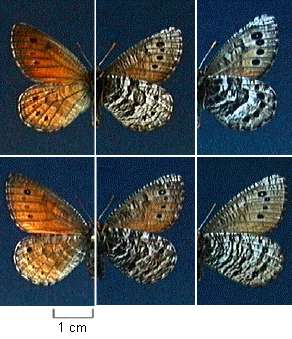
Oeneis uhleri, or Uhler's Arctic, is a species of butterfly in the family Nymphalidae.
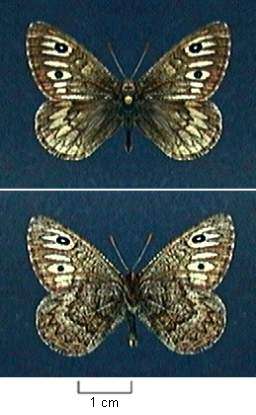
Neominois ridingsii, or Ridings' satyr, is a species of butterfly in the family Nymphalidae. It is found from southern Alberta, Saskatchewan and Manitoba south to the Guadalupe and Catron counties of New Mexico, and west to the central Sierra Nevada of California and central Oregon. The habitat consists of short-grass prairie, intermountain areas and grasslands with some areas of bare soil.
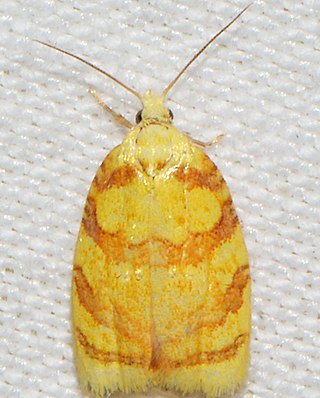
Acleris albicomana, the red-edged acleris moth, is a species of moth of the family Tortricidae. It is found in North America, where it has been recorded from Alberta, Arizona, British Columbia, California, Colorado, Florida, Illinois, Indiana, Iowa, Kentucky, Maine, Manitoba, Maryland, Minnesota, Montana, New Mexico, New York, North Carolina, Ohio, Ontario, Oregon, Pennsylvania, Saskatchewan, Tennessee, Virginia and Utah.
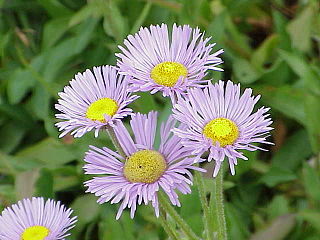
Erigeron glabellus is a North American species of flowering plants in the family Asteraceae, called the streamside fleabane.

Oeneis bore, the white-veined Arctic or Arctic grayling, is a butterfly, a species of Satyrinae that occurs in North America and Asia.
Oeneis polixenes, the Polixenes Arctic or Norique Alpin, is a species of butterfly in the subfamily Satyrinae. It has a Circumpolar distribution occurring in northern parts of North America the Arctic Urals, Kamtchatka, Yakutia, Chukchi Peninsula, and northern Siberia.

















